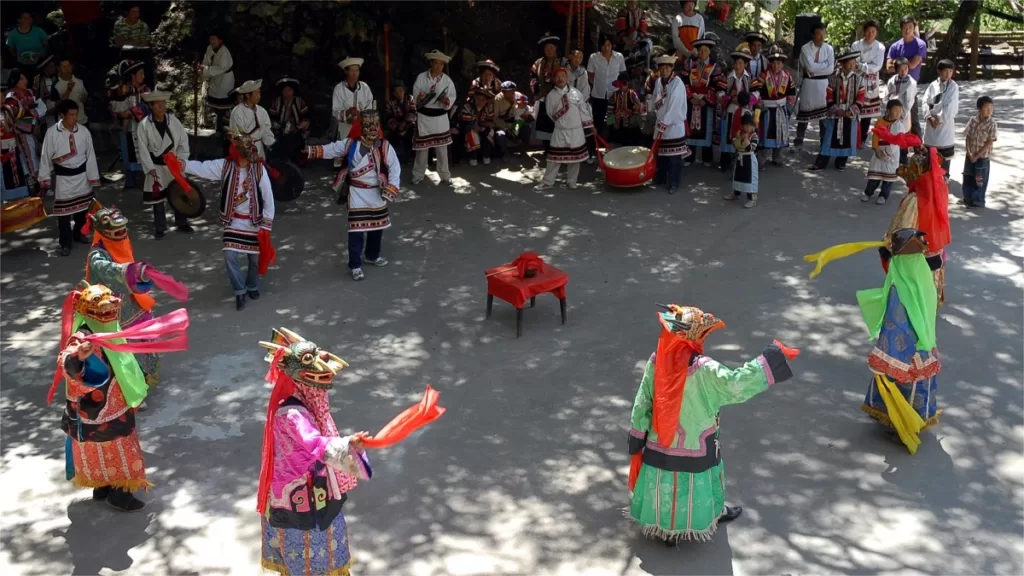Das Risang-Kulturfestival im Jiuzhai-Tal


The Risang Cultural Festival, also known as the Festival of “Sacred Mountains and Sacred Waters,” is celebrated in Jiuzhai Valley, home to the Tibetan ethnic group following the Bön religion. According to their beliefs, every element of nature possesses a spirit, including water and mountains. The Risang Cultural Festival is a traditional celebration where they pay homage to these sacred aspects of their environment.
The festival takes place every year in the Tibetan calendar’s fourth month, which usually aligns with June in the Gregorian calendar. Spanning five days, the event warmly welcomes visitors from all around to partake in the festivities.
During the Risang Cultural Festival, a vast area is selected for setting up a cluster of tents. The central tent, known as the “Scripture Tent,” is reserved for senior monks who lead the chanting and teachings. Surrounding this are village tents, where the Tibetan people from the nine villages in Jiuzhai Valley gather to participate in the celebrations.
Throughout the festival, various competitive events are held among the villages. These include activities such as water-carrying races, carrying green barley bags, stacking grains, performing the “Guote” dance (stilts walking), Tibetan-style military chess, and storytelling competitions in their mother tongue. The festival also showcases traditional ethnic songs, dances, and performances, highlighting the unique allure of Tibetan culture and the beauty of Jiuzhai Valley.
Each household participating in the celebration must prepare a precious vase, known as the “treasure vase.” These vases are exquisitely designed by local renowned painters using mineral pigments, depicting auspicious patterns. Inside the vase, various items symbolizing different meanings are placed. Medicinal herbs symbolize health, knives and arrows signify peace, gold, silver, and copper represent wealth, and five crops like barley, wheat, and corn symbolize bountiful harvests. Nine scrolls of scriptures are placed inside the vase, with one scroll in the center and the other eight arranged around it. Additionally, saffron and five pieces of the purest colored fabric are included.
On the final day of the festival, the monks place all the scriptures, medicinal herbs, knives, and other items into the vases and lead the congregation to submerge them in the deepest sea and place them on the highest mountain in eight different directions. This ritual serves as a prayer for favorable weather, abundant crops, and the safety of both humans and animals. It is a way for the faithful to seek blessings and make vows.
The Risang Cultural Festival not only exemplifies the Tibetan people’s deep reverence for the natural conditions that sustain their lives but also demonstrates their profound love for and commitment to the protection of nature.
Fakten zum Jiuzhai-Tal-Nationalpark